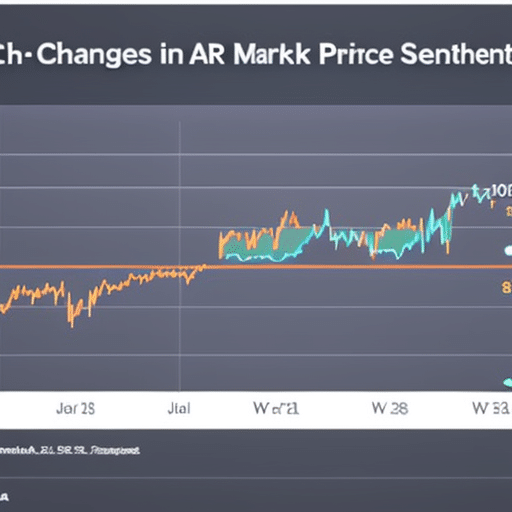How Does Supply And Demand Affect Xrp?
XRP is a digital asset that can be exchanged for other forms of currency. It has been steadily gaining traction in the crypto market and has become one of the most popular virtual currencies around. But how does supply and demand affect its price? In this article, we’ll explore the factors that influence XRP’s supply and demand, as well as how they impact its price. We’ll also look at how to trade XRP, as well as some important considerations when investing in it. By understanding these key points, you can make informed decisions about your XRP investments.
Overview of XRP
XRP is an innovative, much-talked-about cryptocurrency that’s gaining traction in the market. Developed by Ripple Labs Inc., XRP was created to facilitate international payments and transactions for banks and other financial institutions. It has a wide range of features, including its fast transaction times and low fees, which make it attractive to many investors. The Ripple fundamentals underpinning XRP are based on the decentralized ledger system known as the XRP Ledger, which provides secure infrastructure for all users within the XRP ecosystem. As a result, many potential uses of this technology have been identified and more are being explored as part of ongoing research initiatives. In addition, new applications are constantly being developed to take advantage of the unique characteristics of XRP and its underlying blockchain technology. With continued growth in use cases and development efforts, it is clear that increasing demand for XRP will be driven by these factors over time. This means understanding how supply and demand can influence XRP’s price can be essential for investors looking to capitalize on any opportunities presented by this rapidly evolving digital asset class. To gain further insight into this concept, let’s look at some of the key factors that influence supply and demand of XRP.
Factors that Influence Supply and Demand of XRP
You and other investors influence the supply and demand of XRP by trading it on various exchanges. The balance between the supply sources and the demand drivers has a significant impact on the price of XRP. To better understand how this works, let’s look at an overview of the different factors that can affect supply and demand:
| Supply Sources | Demand Drivers |
|---|---|
| Mining Rewards | Adoption & Use Cases |
| Reserves & Escrow Accounts | Regulations & Government Legislation |
| Investor Trading Activity | Market Sentiment & Volatility |
From mining rewards to investor trading activity, these are all important components in understanding how the balance between supply and demand affects XRP prices. With this knowledge in hand, we can now move onto discuss the impact of these factors on XRP prices.
Impact of Supply and Demand on the Price of XRP
The way you and other investors influence the balance of XRP can really surprise you – it’s not just about buying or selling! The fluctuations in the price of XRP result from an intricate combination of trading strategies, market volatility, supply, and demand. When there is a high demand for XRP, its price increases. On the other hand, when there is too much supply circulating on the market relative to demand then prices will drop. As such, monitoring and predicting changes in supply and demand are important elements when trying to forecast potential shifts in price. Furthermore, traders should keep up with news related to Ripple as it can affect both supply and demand significantly. All these factors must be taken into account when deciding on appropriate trading strategies for XRP to capitalize on any changes in the market conditions. In conclusion, understanding how supply and demand affects the price of XRP is key for any trader looking to make profitable investments.
How to Trade XRP
Trading XRP can be exciting and profitable, so let’s get started! To make the most of your trading strategies, it is important to understand risk management. Here are 4 key points that should be taken into consideration before investing in XRP:
- Have a clear understanding of the market conditions – Research on the current trends and news in order to develop an effective trading strategy.
- Use stop-loss orders – Limit your losses by setting up a stop-loss order that will automatically close out your position if the price reaches a certain level.
- Monitor changes in liquidity – Watch for sudden dips or increases in market liquidity as this can affect prices and volatility significantly.
- Diversify your portfolio – Don’t put all of your eggs in one basket; diversifying helps to minimise risk while maximising potential returns on investment.
These are just some basic tips to keep in mind when trading XRP; there are many more complex strategies that can be used depending on individual preferences and risk appetite. By taking these simple steps, investors can feel confident about their decisions when investing in XRP and achieve greater success with their investments over time. As you move forward with investing, it is important to consider other factors such as fees, taxes, and regulations which may impact profitability from day-to-day trading activities.
Factors to Consider When Investing in XRP
When investing in XRP, it’s essential to consider factors beyond simply supply and demand, as they can have a significant impact on the success of your investments. It is important to look at market trends and understand how speculative investing can affect the value of XRP. By doing so, you will be able to make more informed decisions about when to buy or sell XRP tokens. In addition, an understanding of macroeconomic conditions and geopolitical forces that can influence the price of XRP can also help guide your investment decisions. Ultimately, being aware of all these factors will enable you to make better-informed decisions about when to invest in XRP. As such, it’s clear that there are many considerations beyond just supply and demand when it comes to investing in XRP. Moving forward into the subsequent section we’ll explore how these considerations ultimately affect the price of XRP.
Summary of the Impact of Supply and Demand on XRP
Supply and demand dynamics significantly influence the price of XRP, impacting investors’ decisions to buy or sell. This is especially true given the volatility associated with XRP’s price movements due to its limited supply and increasing demand from traders. There are several key factors that can have a significant impact on the supply-demand balance of XRP, including:
- Staking rewards – Staking rewards incentivize holders to hodl their tokens rather than trade them in exchange for profit. This reduces the overall liquidity available in the market, which can cause prices to move higher as buying pressure increases relative to selling pressure.
- Liquidity mining – Providing incentives for users who add liquidity to an exchange’s order book also helps support price stability by providing additional sources of liquidity that can be tapped into during times of high volatility.
- Regulations – Regulatory compliance requirements may limit or restrict certain types of trading activities, such as shorting, which could reduce overall volume and change the supply-demand balance of XRP in unpredictable ways.
- Market sentiment – Factors such as news events and rumors can affect investor sentiment and cause rapid changes in the supply-demand balance of XRP that are difficult to predict with accuracy ahead of time.
Overall, understanding how these factors affect the supply-demand dynamics of XRP will help investors make informed decisions when investing in this digital asset class.
Frequently Asked Questions
What is the current market capitalization of XRP?
You are asking about the current market capitalization of XRP, the cryptocurrency token released by Ripple technology. With increasing adoption of XRP, its market cap has risen significantly and currently sits around $14 billion USD.
What is the maximum circulating supply of XRP?
You may be wondering what the maximum circulating supply of XRP is. It is currently set at 100 billion coins, leading to price fluctuations and economic volatility. It’s important to consider supply and demand when evaluating XRP’s market performance.
How does XRP compare to other digital assets?
XRP is a digital asset with high price volatility, but benefits from secure network infrastructure. Compared to other crypto assets, XRP offers investors liquidity and scalability advantages.
What is the most secure wallet to store XRP?
When buying XRP, it is important to choose the most secure wallet. Ledger and Trezor are two of the most popular hardware wallets that offer robust security features for storing XRP. They ensure your coins remain safe from malicious actors and market trends.
What are the potential risks associated with investing in XRP?
Like riding a roller coaster, investing in XRP comes with potential risks such as price fluctuation and liquidity risk. It’s important to do research to understand these risks before investing.






 Bitcoin
Bitcoin  Ethereum
Ethereum  Tether
Tether  XRP
XRP  USDC
USDC  Solana
Solana  TRON
TRON  Lido Staked Ether
Lido Staked Ether  Dogecoin
Dogecoin  Figure Heloc
Figure Heloc  Cardano
Cardano  Bitcoin Cash
Bitcoin Cash  WhiteBIT Coin
WhiteBIT Coin  Wrapped stETH
Wrapped stETH  Wrapped Bitcoin
Wrapped Bitcoin  USDS
USDS  Wrapped eETH
Wrapped eETH  Binance Bridged USDT (BNB Smart Chain)
Binance Bridged USDT (BNB Smart Chain)  Chainlink
Chainlink  Zcash
Zcash  Monero
Monero  LEO Token
LEO Token  WETH
WETH  Stellar
Stellar  Coinbase Wrapped BTC
Coinbase Wrapped BTC  Ethena USDe
Ethena USDe  Hyperliquid
Hyperliquid  Litecoin
Litecoin  Avalanche
Avalanche  Sui
Sui  Hedera
Hedera  sUSDS
sUSDS  Uniswap
Uniswap  Shiba Inu
Shiba Inu  Dai
Dai  USDT0
USDT0  Canton
Canton  Toncoin
Toncoin  World Liberty Financial
World Liberty Financial  PayPal USD
PayPal USD  Cronos
Cronos  Ethena Staked USDe
Ethena Staked USDe  Mantle
Mantle  USD1
USD1  Polkadot
Polkadot  Rain
Rain  MemeCore
MemeCore  Bitget Token
Bitget Token